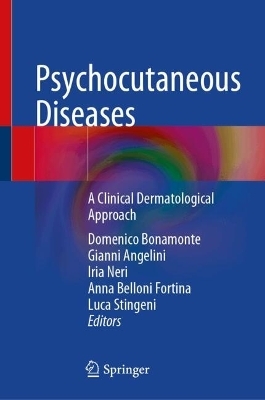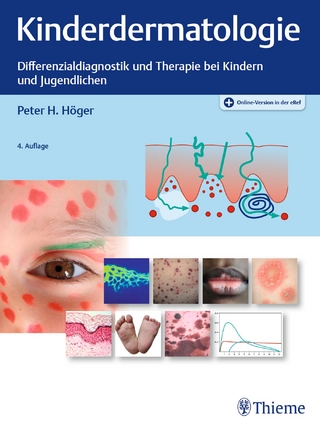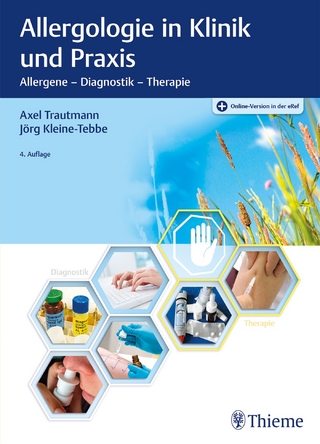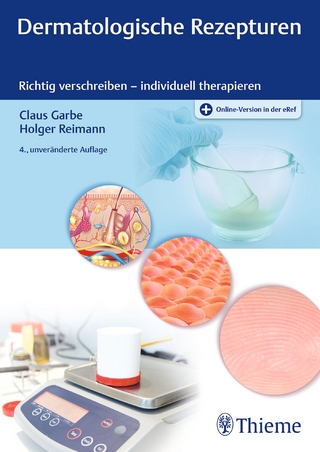
Psychocutaneous Diseases
Springer International Publishing (Verlag)
978-3-031-70295-2 (ISBN)
- Noch nicht erschienen - erscheint am 31.01.2025
- Versandkostenfrei innerhalb Deutschlands
- Auch auf Rechnung
- Verfügbarkeit in der Filiale vor Ort prüfen
- Artikel merken
The terminology, classification, diagnosis and treatment of dermatological factitious disorders, falling within the broad scope of self-induced dermatological diseases, are the subject of open debate. The complexity of the topic is also linked to the involvement of different health professions who often refer to different classifications, whereas patients with these conditions need a consistent multidisciplinary approach. The purpose of this work, resulting in decades of field experience and of the joint efforts of both dermatologists and psychiatrists, is to clarify the terminology of these disorders and, above all, to analyze their clinical characteristics in detail, the first and pivotal sign of suspicion and diagnosis.
Artificial dermatitis are self-induced diseases caused by various means and for diverse purposes. Illness can be mimicked with unlawful purposes, or to take advantage of professional situations (obtaining extension of illness, recognition of the condition as an occupational disease, reaching a higher class of invalidity). In these cases, the simulators are aware of their own action and its purposes. Conversely, there are cases of self-induced dermatitis dictated by psychiatric problems, such as psychosis, intellectual disability and personality disorders. Intrinsic motivation of such lesions is different: patient intends to draw attention, reacts to difficult environmental situations by involuntary somatization of the skin. Skin artifacts of illicit intent are true "simulations", while the lesions caused unconsciously by subjects with psychological disorders are "pathomimies". In addition to the groups of true simulation and "pathomimia", another group of self-provoked dermatoses is due to coercive habits (excoriations, tics) in conscious subjects who recognize the urgency of a self-harming action. Psychocutaneous Diseases leaves room to the clinic features and motivations of artifacts, both perpetuated on oneself and on other people ("by proxy" factitious disorders). The topic is completed by the addition of chapters by psychiatric specialists, in order to address pathogenetic problems and therapeutic guidelines, as well as contributions that integrate the approach with medico-legal expertise.
This unique work will support diagnosis by dermatologists, but also psychiatrists, psychologists, internists, forensic doctors and general practitioners.
Domenico Bonamonte holds an honors degree in Medicine and Surgery and a specialist qualification in dermatology and venereology. He is Member of the Restricted College of the Doctoral School / PhD School in Public Health, Clinical Medicine and Oncology, University of Bari Aldo Moro. He holds a PhD in Allergology, is a Research Fellow and, since 2013, an Associate Professor of Dermatology and Venereology at the University of Bari. He is the author of several scientific publications, including monographs and book chapters. His research focuses on experimental, clinico-experimental and clinical studies investigating various fields in dermatology, particularly etiopathogenetic aspects. He has also conducted in-depth studies in the areas of contact dermatitis, both occupational and non-occupational dermatoses, aquatic dermatitis (mainly of marine origin), dermatitis in the sports environment, inherited bullous epidermolysis and pediatric dermatology. Currently, President of the "Italian Society of Pediatric Dermatology" .
Giovanni Angelini is a Full Professor of Clinical Dermatology and Head of the Division Unit of Dermatology at the University of Bari, Italy, specializing in dermatology and venereal diseases. He retired as a Full Professor of Dermatology in the Clinic Dermatology of Bari in 2011. He is a former member of the editorial boards of various international and Italian dermatological journals, and Past President of the Italian Society of Allergy-related, Occupational and Environmental Dermatology. He is the author of over 600 scientific publications, including books on general dermatology, allergy-related and occupational dermatology, aquatic dermatology, mycobacterial skin infections, and chapters in volumes on dermatology, immunology and occupational medicine. His main research interests include the areas of immunological, allergic and environmental diseases.
Iria Neri is Associate Medical Director of the Pediatrics Dermatology Clinic and Manager of the Dermatology Clinic and the Rare diseases Clinic at Sant'Orsola Malpighi University Hospital, Bologna, Italy. Her teaching activities include the course of Pediatric Dermatology (integration to the Dermatology Clinic course, held during IV year) at the Specialization school in Dermatology and Venereology in Bologna. Additionally, she acts as Chief of the referring center of the Emilia Romagna district for the treatment of infantile hemangiomas, coordinates the clinical research at the Dermatology Unit of the University Hospital. Prof. Neri is peer-reviewer for "The Lancet" journal and reviewer for: Journal of the American Academy of Dermatology, Pediatric Dermatology, International Journal of Dermatology, Journal of Pediatric Infectious Diseases, Journal of the European Academy of Dermatology and Venereology, Giornale Italiano di Dermatologia e Venereologia, Pediatric Dermatology. She is member or chair in the following scientific associations: SIDeMaST, SIDerP, SISAV, ADOI, GIDEP, SFD, ESPD, the International Pediatrics Dermatology Society, member of Scientific Committee of Tuberous Sclerosis Association, of the network of Italian Laminopathies and of the Scientific Committee of Italian Society of vascular Anomalies. Prof. Neri has authored over 294 peer-reviewed papers in national and international journals, contributed to 12 books and participated to over 145 conferences.
Anna Belloni Fortina is an Associate Professor of Dermatology and Venereology at the Department of Medicine, at the University of Padova (UNIPD), Italy, and Past President of the Italian Society for Pediatric Dermatology. After graduating in medicine, she specialized in dermatology and venereology, and became the Regional Coordinator for Rare Pediatric Skin Diseases at the Veneto Regional Center. In 2006 she was nominated Head of the Veneto Regional Center for Pediatric Dermatology and Genodermatoses.
1. Psychodermatology: When Psyche And Skin Interact.- 2. Psychocutaneous Diseases.- 3. Self-Inflicted Skin Disorders: Diagnosis And Management.- 4. Factitious Skin Disorders Without External Incentives.- 5. Factitious Skin Disorders With External Incentives.- 6. Psychocutaneous diseases in children: a clinical dermatological approach.- 7. Compulsive skin disorders.- 8. Cutaneous diseases precipitated or perpetuated by emotional factors.- 9. Group and mass population disorders.- 10. Medicolegal implications in the management of psychocutaneous diseases.
| Erscheint lt. Verlag | 31.1.2025 |
|---|---|
| Zusatzinfo | XIV, 211 p. 80 illus. in color. |
| Verlagsort | Cham |
| Sprache | englisch |
| Maße | 155 x 235 mm |
| Themenwelt | Medizin / Pharmazie ► Medizinische Fachgebiete ► Dermatologie |
| Schlagworte | Compulsive personality disorders • Cutaneous artifacts • delusional infestation • Dematitis factitia • Dermatitis artefacta • Factitious skin disorders • Malingering • Munchausen syndrome • Occupational dermatitis artefacta • Psychocutaneous Disorders • psychodermatolic conditions • Psychodermatology • psychogenic pruritus • Psychosomatic Disorders • psychotropic medication • Psychotropic Treatment • self-induced skin lesions • Self-injury • Trichotillomania |
| ISBN-10 | 3-031-70295-6 / 3031702956 |
| ISBN-13 | 978-3-031-70295-2 / 9783031702952 |
| Zustand | Neuware |
| Haben Sie eine Frage zum Produkt? |
aus dem Bereich


